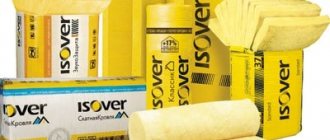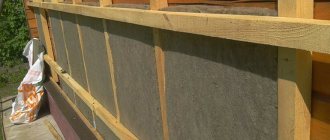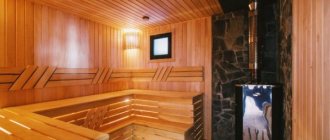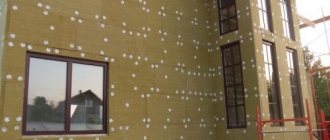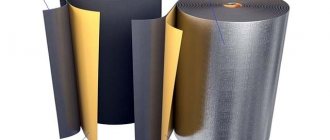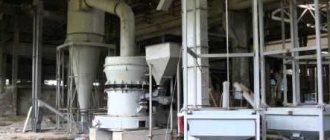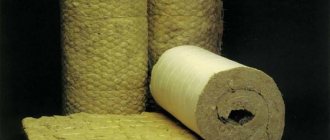Cutting mineral wool, how and how to cut mineral wool in rolls and slabs
A distinctive feature of mineral insulation is its structure consisting of fibers, which must be solid to ensure thermal insulation. In this regard, special attention should be paid to the cutting process. Do not use cardboard or fabric scissors, or ordinary table knives to cut the material. These tools are not intended for such material, as they can spoil its appearance and impair its useful properties. It is very useful for novice repairmen and builders to find out what tools are suitable for this task.
Choice
The choice of knives for insulation is quite wide, so first of all you should look at the characteristics of the insulating material.
The easiest way is with a small amount of work. For example, for cutting mineral wool in slabs less than 50 mm thick, ordinary kitchen or stationery knives are suitable. For more saturated linen material, it will be necessary to resort to using a hacksaw for wood or metal, a construction knife, a specialized knife prepared for cutting thermal insulation.
Knives made of carbon or stainless alloy are universal.
However, a carbon knife requires more careful care than a stainless steel one, otherwise rust may appear on it. After washing the carbon steel, be sure to wipe the blade dry and lubricate it.
What will we cut with?
This can be done with different devices, depending on the thickness of the mineral wool.
Thin materials (no more than 50 mm):
- kitchen bread knife with serrated edge;
- assembly construction knife;
- stationery knife.
Denser and thicker materials:
- special knives about 300 mm long. They are often offered by manufacturers of insulating materials. Such a tool has teeth of different sizes for cutting mineral wool of different thicknesses and densities;
- saws with straight teeth;
- hacksaw for metal;
- cutting machines. Used when cutting elements of complex shapes. However, for independent construction of your own house, that is, for one-time use, it is not advisable to purchase such expensive equipment - you will have to adapt to the capabilities of other tools.
Characteristics and properties of the material
Before starting construction or renovation work, the owner of the premises thinks about what criteria should be used to select materials. Currently, the sales range is replete with a variety of canvases that differ from each other in raw materials, price, scope of application, and operating characteristics.
The term “mineral wool” implies three types of materials, namely:
Glass wool (made from fiberglass) is characterized by low density and high hygroscopicity. The material does not have moisture resistance properties, and heat resistance should not be expected from it: when a high heating temperature is reached (about 300 degrees), the wool fibers melt, and the material no longer serves as an insulator. Glass wool is sold in rolls.
Glass wool is produced using the blow molding method: an industrial centrifuge creates air flows that go directly into the raw material. Due to the flow of air, fibers appear from the threads, and they can have different lengths, directions and thicknesses.
Mineral wool has low thermal conductivity, allows steam to pass through due to the cells in its structure, and almost does not absorb water. In addition to the base, there are few binding elements in the composition, which allows it to withstand high temperatures. The material is widely used as sound insulation and insulation for various substrates and surfaces. It is produced in sheets that vary in strength.
Slag wool for room insulation
Slag wool is the cheapest option for insulation. The material consists of fibers that are waste from blast furnaces; it is not dense and does not have good heat resistance. If you overheat slag wool, it will sinter. Therefore, the material is not suitable for insulating rooms adjacent to heat sources, and is also not recommended for building houses.
The structure of the horizontal layer of any type of mineral wool is created in the direction of the fiber. The formation of vertical sections occurs due to elements that are located chaotically. Each type of material has its own characteristics and external differences.
How to cut mineral wool:
If you don’t know how to cut mineral wool at home, we can advise you on excellent tools that are best suited for cutting mineral wool.
So, for cutting mineral wool, a good, sharp stationery knife or a hacksaw is best suited; carefully cut the mineral wool in the right directions; for greater accuracy, you can draw lines with a pencil or cut directly along a ruler. The process of cutting mineral wool is somewhat similar to cutting paralon, only you need to apply a little more effort, pressing a little harder on the tool for cutting mineral wool.
What to do with scraps and remains of mineral wool.
One of the solutions may pleasantly please many (especially firms and large manufacturers). Mineral wool scraps are not useless and can be useful for those who decide to insulate their walls and ceilings on a budget. Trimmings can be sold at a low price, and the demand for the product will be very high.
Overview of mineral wool cutting tools
There are always many questions about what, how and how to cut mineral wool. Especially for those who are going to build housing without the help of others (for example, frame housing, which involves assembly by their own employees).
After all, in its structure it is a fibrous material, in addition having a certain thickness. Ordinary table knives or scissors designed for cutting cardboard or thick fabrics are completely unsuitable here.
But before you start cutting mineral wool, it is important to deliver it correctly to the construction site. After all, otherwise, material brought to the point of being defective will not have to be cut, but simply replaced with a new one. As is clear - additional costs.
How to transport insulation correctly
The science is simple, but very principled. What is necessary:
- slabs and mats are transported horizontally;
- the truck is expected to have a protective awning;
- transportation is provided only in packaged form;
- during transportation, loading and unloading operations, it is important not to compress the heat insulator too much;
- unpack the mineral wool just before starting insulation work.
Safety is ok
Stone wool is made from natural raw materials – the mineral basalt. Its fibers are bonded using formaldehyde resin. It gives the material the necessary strength characteristics, in addition making it more dense. Although they say that phenol is dangerous, but not in this case.
READ How to Restore a 18 Volt Screwdriver Battery
After all, it is not capable of being released from basalt wool, since it is completely neutralized during the production of the material. In general, at the production stage of this mineral heat insulator, phenolic fumes are very small - much less than the permissible limit of 0.05 milligrams per m2/hour.
In contrast to glass wool fibers, basalt fibers do not irritate the skin, do not prick, and do not cause allergies.
At the moment, the construction market has decent volumes of stone wool brands of various densities, the technical characteristics of which are somewhat different.
But what remains for our client to do? The types of basalt heat insulator are distinguished by their strength and a couple of years of operation.
Residues of mineral wool
After thermal insulation, a certain amount of unused material remains. Given its unique characteristics, there is no need to rush to get rid of slab scraps. They can be used usefully in the household. If this is not planned to be done immediately, the insulation must be sealed and placed out of the reach of children and animals.
It is advisable to use mineral wool for insulating the following structures:
- doghouse;
- pet barn;
- blind area around the house;
- garage walls and ceiling;
- home workshop;
- basement;
- cellar for food.
You can benefit from leftover mineral wool by handing it over to a recycling collection point. The accepted material is sold to enterprises that make granules from it, which are used for re-production of insulation.
How to cut mineral wool
If we talk about industrial scale, then special machine equipment is used to cut this material. But at home you can use the following as a cutting tool:
- mounting knife;
- hacksaw for wood or metal;
- kitchen serrated knife for cutting bread;
- special tools: a knife with a blade made of stainless or carbon steel. The latter type is used for cutting different types of mineral wool; it is sharp and has good cutting properties.
Operational features of basalt wool
Basalt and other rocks of its group are used for production. Thin fibers are taken, into the melt of which limestone (10-15%) or charge is added. Additives increase the resistance of the material to excessively high temperatures and aggressive environments. The result is an insulation material with fairly high performance characteristics:
Scheme of basalt insulation.
- thermal insulation and hydrophobization. The first parameter is from 0.042 to 0.048 W/mK. Other well-known insulation materials (for example, polystyrene foam, polyurethane foam) have approximately the same characteristics. Mineral wool is not able to accumulate moisture (hygroscopicity is less than 1%), which makes its weight unchanged. A distinctive feature is vapor permeability, which guarantees insulation and at the same time intense moisture exchange between the external environment and the walls of the building;
- density, strength. The insulation has sufficient density (from 30 to 100 kg/cubic m), which guarantees high thermal insulation properties with optimal strength. The rigidity of the material is ensured by the direction of the fibers; they are located in horizontal and vertical directions;
- soundproofing. Good noise protection characteristics are achieved due to the porous structure of the wool;
- resistance to aggressive environments. Vata is “indifferent” to alkali and acids; does not rot, is not affected by fungus. Rodents also avoid this insulation;
- fire resistance. Basalt wool can withstand heating up to +700°C. This protects the structure from complete destruction in a fire and gives time for residents to evacuate;
- health safety. In production, resins containing harmful substances (formaldehyde, phenol) are used. However, adherence to the technology requires their introduction into the insulation composition in a chemically bound state. The substances become completely neutral in relation to the environment and do not pose a danger to humans.
However, if mineral wool is produced by handicraft methods, then there is a health hazard. Therefore, it is more advisable to purchase material from trusted manufacturers.
Features of installing mineral wool insulation
The manufacturer produces the material in the form of rolls or slabs. Mineral wool insulation is used for walls, roofing or interior partitions. In the latter case, mainly to achieve good soundproofing parameters of the structure. During installation, the requirements for insulation are taken into account, which you need to know before purchasing:
- installation in a sloping roof involves the use of wool with a density of at least 30-40 kg/cu. m, otherwise the material will simply sag over time. Recommended thickness - 15 cm;
- the arrangement of partitions should be carried out using mineral wool with a density of 50 kg/cubic. m. Increased density is needed to ensure high-quality noise insulation;
- Load-bearing walls are best insulated from the outside, because this will bring the dew point, where condensation will form, to the outside of the wall. The density of the material must be at least 80 kg / cubic meter. m, and thickness - 10 cm.
Modern mineral wool is a high-quality insulation material that has been tested for decades. Current technologies have made this material completely safe for installation and operation, and its technical characteristics, combined with cost, leave its closest competitors behind.
Main characteristics of the material
The flammability class guarantees the safety of the insulation
Materials used for internal and external insulation of residential buildings and structures are subject to certain requirements. Do the technical characteristics of TechnoNIKOL insulation meet all the necessary parameters?
Let's look at the two main insulation materials offered by this manufacturer.
Mineral wool insulation
The photo shows the correct location of the wall insulation layers
Mineral wool in slabs or rolls is the most common option for external energy-saving cladding for walls, foundations and roofs.
Although the price of this material is thirty percent higher than, for example, polyurethane foam or expanded polystyrene, this is justified by its excellent technical characteristics:
- Fire safety . TechnoNIKOL insulation products are produced on the basis of rocks of the gabbro-basalt group, therefore stone wool fibers are non-flammable material.
Important. In case of fire, thermal insulation holds high temperatures (up to 1000 degrees above zero) and protects the building. It also gives additional time for the evacuation of people and valuables. The instructions for the material guarantee that at high temperatures the finish does not emit substances harmful to health.
- The thermal insulation produced by the company based on stone wool consists of ninety-nine percent air and one percent stone fibers . This guarantees highly effective thermal insulation properties of the material;
About installation methods
Stone wool is used for all types of work, external and internal
For each climate zone, it is important to separately calculate the coefficient below which the thermal resistance should not fall
To do this, the thickness of the structure in meters is divided by the thermal conductivity coefficient that distinguishes this or that material. Each of them is counted separately, then the indicators are added to each other. This way you can calculate the optimal performance of basalt slabs, and it is easier to control the technical characteristics.
Wall insulation
Due to their composition, basalt insulation is not able to absorb moisture. But it is better to take care of a tight vapor barrier when the material is installed indoors. Then all the moisture from the room will be retained in the walls.
The layers of material, starting from the deepest, are in the following order:
- Interior finishing.
- Minimal ventilation gap.
- Vapor barrier.
- Stone wool.
- The wall is outside.
Exterior finishing is best done from materials that can breathe. This will protect against moisture from escaping from the insulation. 50 kilograms per m3 is the optimal density for work when using basalt insulation.
Facades
Cotton wool is also excellent for long-term insulation of facades, because the total service life, if all requirements are met, reaches seven decades. For a ventilation facade or plaster – you can choose any method to complete the project. In the case of plaster, the situation is simpler.
It is enough to connect the insulation sheets to the wall, then use plastic dowels or mushrooms for fastening. After this, the tile will retain its parameters for a long time.
The top of the wall is plastered and a reinforcing mesh is used.
Creating ventilated facades will be more difficult:
Wall Mounting Rails
It is important to take care of the indentation 2 centimeters less than the width of the wool. The insulation itself is placed between the guides. The soft layer must be laid against the wall if there are several layers themselves. The wind barrier is laid directly on the cotton wool, close to each other. The finishing guides are filled with the following
The ventilation gap is created during this same stage. Finally, everything ends with stuffing the trim.
Treatment of floor and ceiling
A vapor barrier is an element that is required in any case
It doesn’t matter whether we are talking about floor or ceiling coverings. Basalt wool does not absorb moisture, but this does not mean that you can abandon such solutions completely
Using a vapor-proof membrane to cover the top of the insulation is an even worse mistake.
Complete insulation of materials is impossible; some moisture will still get inside. Using a vapor barrier on top leads to the formation of fungus. The reason is that all the moisture accumulates inside the cotton wool itself.
Here are some simple tips that will help you understand the further work:
- It is recommended to install the vapor barrier on the inside of the room, under the insulation. This is true in the case of floors.
- Waterproofing protects against moisture, but is capable of allowing steam to pass through. These types of materials must go above the insulation. Then moisture will not get inside, and steam will come out.
- Wind protection. Protects the top layers of materials from air ingress. Thanks to this, the ability to protect the base at the original level is maintained for a long time. This option is used only by owners of ventilated facades.
A ventilation technical gap between films and finishing materials must be present in any case. Between foam and insulation, this arrangement option will also not be superfluous. 35 kilograms per cubic meter is a suitable density for work in this case.
Roof
A vapor barrier is laid between the insulation and the room. This is done so that the vapor barrier layer does not let moisture in in large quantities. The waterproofing membrane must lie behind the stone wool. She's missing steam. The main breed does not matter.
Without ventilation gaps, mold appears along with condensation. Insulating films do not allow direct exposure to sunlight; they must be constantly protected from this. This is what insulation is for.
